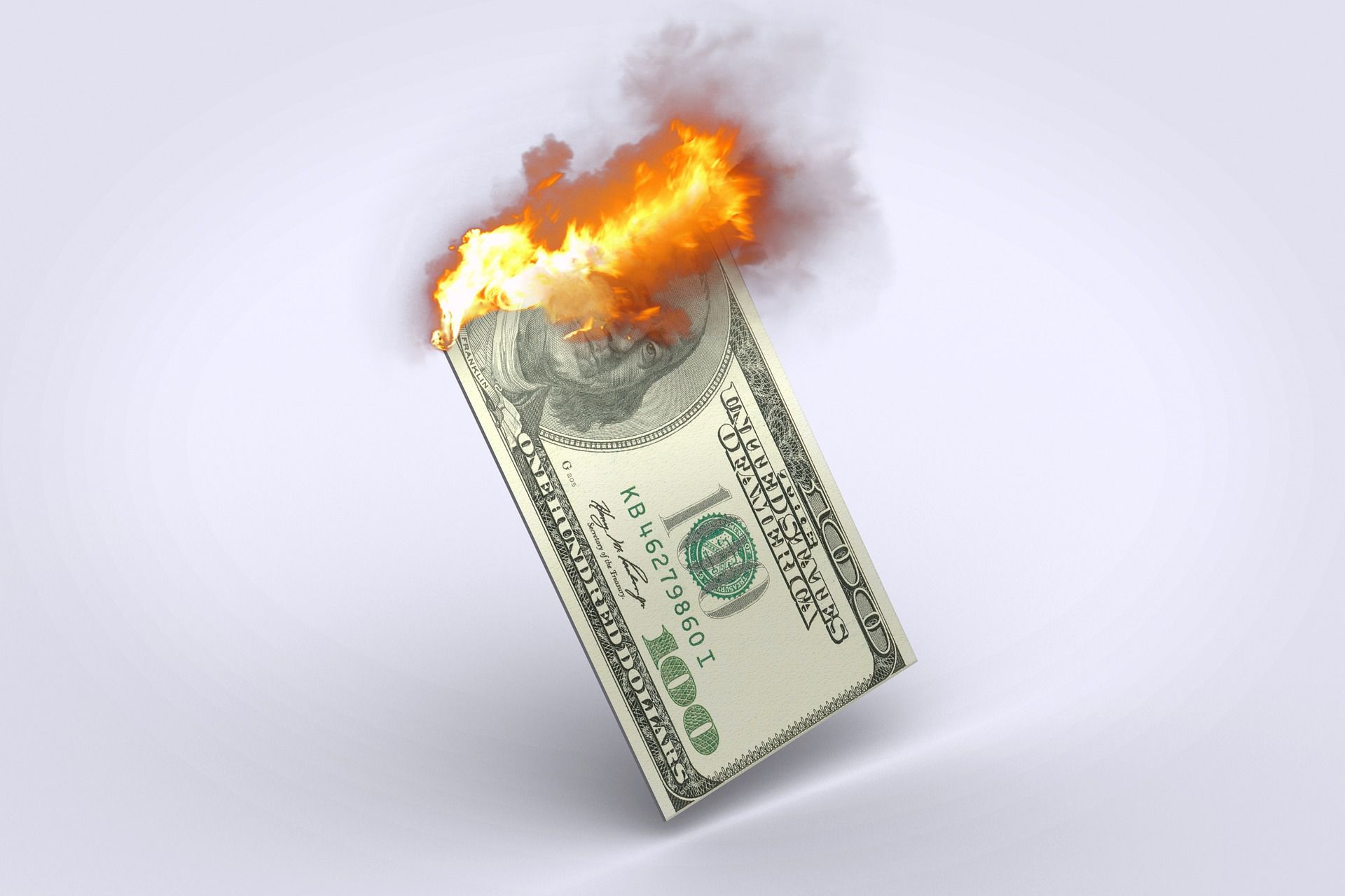[ad_1]
The impact inflation has on the time value of money is that it decreases the value of a dollar over time. The time value of money is a concept that describes how the money available to you today is worth more than the same amount of money at a future date.
This also assumes you do not invest the money available to you today in an equity security, a debt instrument, or an interest-bearing bank account. Essentially, if you have a dollar in your pocket today, that dollar’s worth, or value, will be lower one year from today if you keep it in your pocket.
Inflation increases the price of goods and services over time, effectively decreasing the number of goods and services you can buy with a dollar in the future as opposed to a dollar today. If wages remain the same but inflation causes the prices of goods and services to increase over time, it will take a larger percentage of your income to purchase the same good or service in the future.
Here’s a chart of the inflation rate from the late 1600s to today. Notice that since the 1950s, the rate of inflation has been positive for nearly every year.
Source: OfficialData.org.
Image by Sabrina Jiang © Investopedia 2020
So, for example, if an apple costs $1 today, it’s possible that it could cost $2 for the same apple one year from today. This effectively decreases the purchasing power of money over that period, since it will cost twice as much to purchase the same product in the future. To mitigate this decrease in the time value of money, you can invest the money available to you today at a rate equal to or higher than the rate of inflation. Consider the chart below, which lays out the buying power of $100 from 1799 to today. So, in the example above, if we had $100 in apples in 1799, those same apples would cost over $2,000 today.
Source: OfficialData.org.
Image by Sabrina Jiang © Investopedia 2020
What Impacts Inflation?
Basically, inflation is caused by a rise in the price of goods or services. Now, that is driven by supply and demand. Holding all else constant, a rise in demand can push prices higher (if the supply of goods and services is stable), while a supply reduction can also drive higher prices.
Demand can rise because consumers have more money to spend. More spending increases inflation, in particular, higher consumer confidence. When wages are steady or rising, and unemployment is relatively low, inflation is likely to rise. As well, manufacturers are likely to raise prices if consumers are willing, or capable, of spending more.
Then there’s the supply side. Lower supply can drive down demand, pushing prices higher. A decline in supply can happen for a number of reasons, such as disasters that disrupt the supply chain or manufacturers’ capabilities. Or assuming an item turns out to be very popular, it can sell out quickly, such as the case with iPhones.
The Federal Reserve and Inflation
One of the Federal Reserve’s chief responsibilities is to monitor and control inflation. The Fed aims to keep the inflation rate around 2%. The Fed manages inflation in one of three ways—federal funds rate, reserve requirements, and money supply reduction.
The Fed funds rate is the rate at which banks can borrow money from the government. To help curb rising inflation, the Fed will increase rates, which inherently increases interest rates charged by banks. This helps slow spending and forces prices lower, helping keep inflation in check.
Then there is the reserve requirement, which is the amount capital banks must keep on hand. To curb spending and inflation, the Fed can increase the reserve requirement, which decreases the amount of money banks have available to lend. Finally, there’s money supply, which involves the Fed directly influencing the amount of money in circulation by issuing or calling in bonds, which helps reduce the amount of money in circulation.
The Fed measures inflation by monitoring and tracking various indexes, specifically, price indexes that track price changes of particular goods and services. The main index used by the Fed includes the personal consumption expenditures index that’s put out by the Department of Commerce. The PCE index has a variety of goods and services that are part of household spending, but it does consult other indexes, such as the Department of Labor’s consumer price and producer price indexes.
[ad_2]
Image and article originally from www.investopedia.com. Read the original article here.

